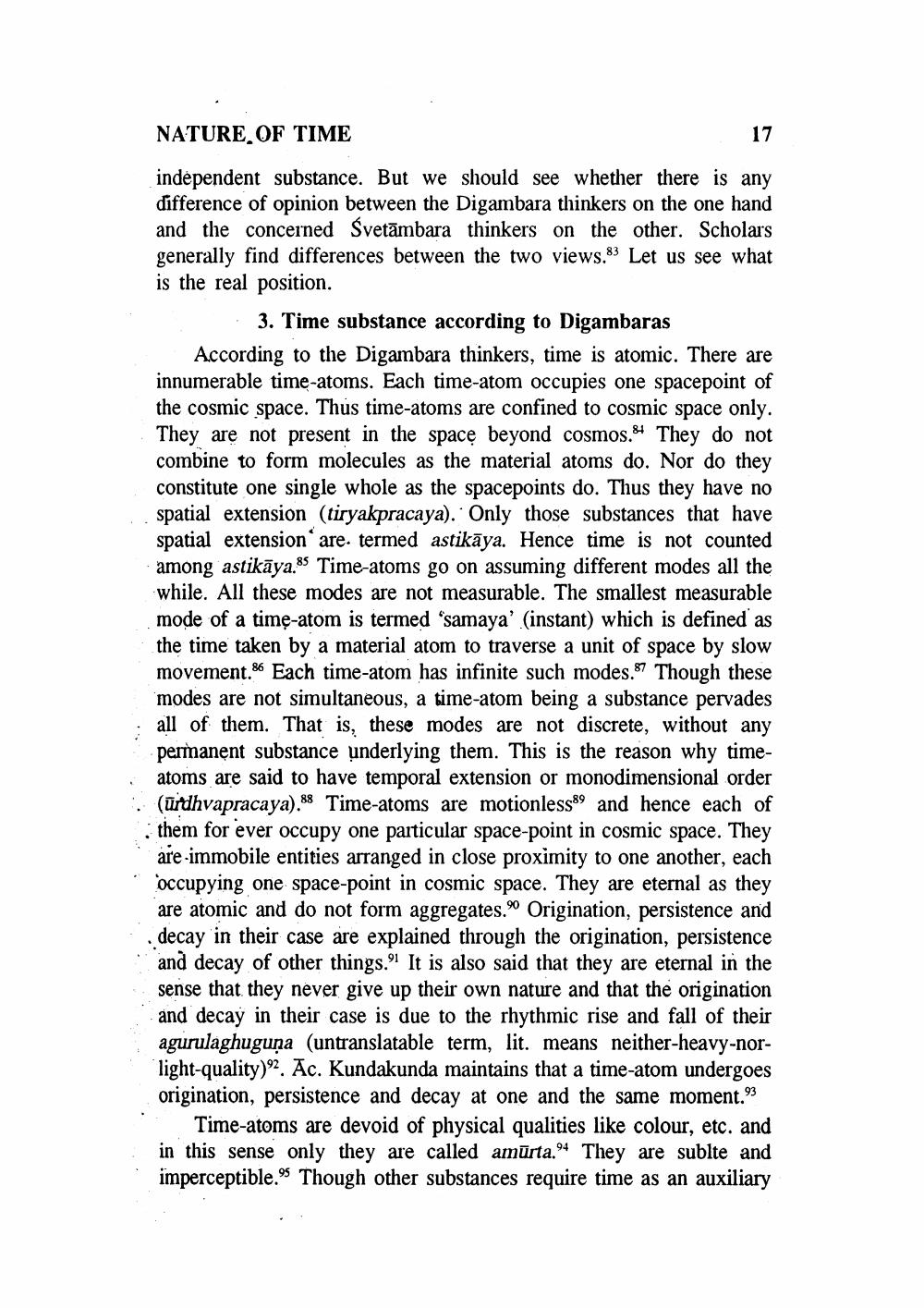________________
NATURE OF TIME
17
independent substance. But we should see whether there is any difference of opinion between the Digambara thinkers on the one hand and the concerned Svetāmbara thinkers on the other. Scholars generally find differences between the two views.83 Let us see what is the real position.
3. Time substance according to Digambaras According to the Digambara thinkers, time is atomic. There are innumerable time-atoms. Each time-atom occupies one spacepoint of the cosmic space. Thus time-atoms are confined to cosmic space only. They are not present in the space beyond cosmos. They do not combine to form molecules as the material atoms do. Nor do they constitute one single whole as the spacepoints do. Thus they have no spatial extension (tiryakpracaya). Only those substances that have spatial extension are. termed astikāya. Hence time is not counted among astikāya.85 Time-atoms go on assuming different modes all the while. All these modes are not measurable. The smallest measurable mode of a time-atom is termed 'samaya' (instant) which is defined as the time taken by a material atom to traverse a unit of space by slow movement.86 Each time-atom has infinite such modes. 87 Though these modes are not simultaneous, a time-atom being a substance pervades all of them. That is, these modes are not discrete, without any permanent substance underlying them. This is the reason why time
atoms are said to have temporal extension or monodimensional order . (ūdhvapracaya).88 Time-atoms are motionless89 and hence each of : them for ever occupy one particular space-point in cosmic space. They are-immobile entities arranged in close proximity to one another, each occupying one space-point in cosmic space. They are eternal as they are atomic and do not form aggregates. Origination, persistence and decay in their case are explained through the origination, persistence and decay of other things. It is also said that they are eternal in the sense that they never give up their own nature and that the origination and decay in their case is due to the rhythmic rise and fall of their agurulaghuguna (untranslatable term, lit. means neither-heavy-norlight-quality). Ac. Kundakunda maintains that a time-atom undergoes
origination, persistence and decay at one and the same moment.93 T Time-atoms are devoid of physical qualities like colour, etc. and
in this sense only they are called amūrta.94 They are sublte and imperceptible.95 Though other substances require time as an auxiliary




